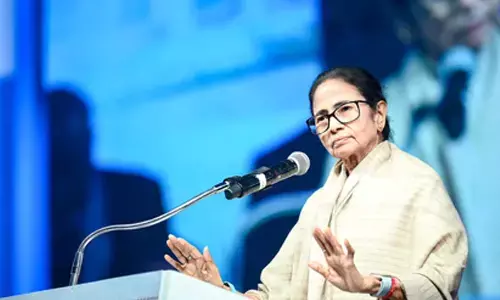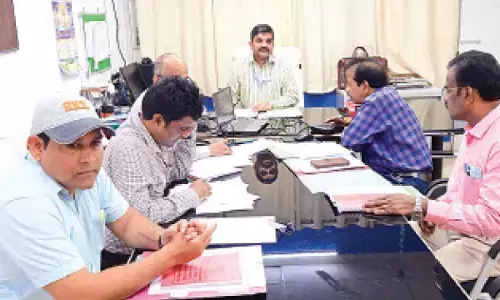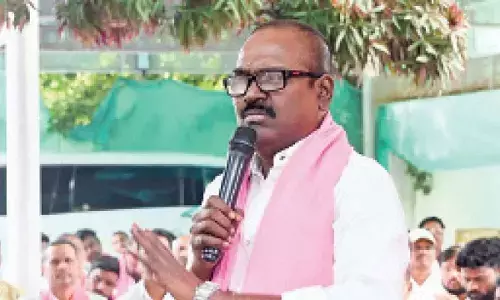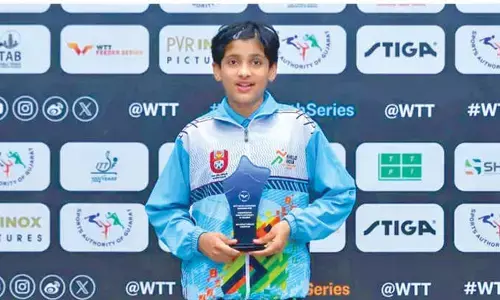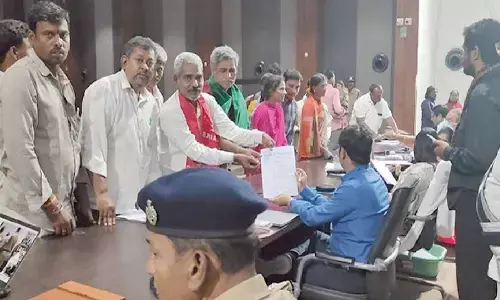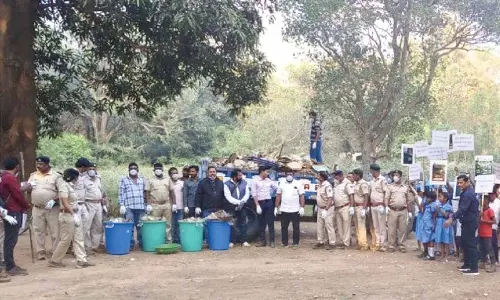Look beyond fashion labels and hashtags to be #Vocal4Handmade

Look beyond fashion labels and hashtags to be #Vocal4Handmade
Ever since the outbreak of COVID-19, there has been a heightened awareness within the media about being “Vocal for Local”, especially when it comes to fashion
Ever since the outbreak of COVID-19, there has been a heightened awareness within the media about being "Vocal for Local", especially when it comes to fashion. Last weekend saw fashion bodies such as the Fashion Design Council of India and Lakme Fashion Week asking the fashion fraternity to share pictures with the hashtag #Vocal4Handmade.
Over 60 million people are employed by the apparel and textile industry, the COVID-19 epidemic has upturned the lives of many of these highly skilled artisans. Between the current migrant exodus and the forced closure of factories the future of this precious sector is at risk. Within this set of skilled artisans are handloom kaarigars, of which 44 lakh are registered.
While 95 per cent of the world's handloom fabric comes from India, it is worrying to know how little real respect is given to these workers in their home country. Just the day before Handloom Day craft activist Laila Tyabji announced that the All Indian Handicrafts Board had been abolished.
Think like your grandmother Neeti Mehra, the founder of Beej Living, a journal on slow living and a sustainability consultant says, "We need to reconnect with our heritage of fabrics and silhouettes which look good, feel good and are good for our skin." Her tip is to buy garments directly from on-line organisations who you know are working in the handloom sector such as Dastkar or SaveTheLoom.Org.
The added bonus when buying from these organisations is it also shifts your mindset to start shopping the way our grandmothers did. They knew the basis of clothing was cloth and it took precedence before the cut, colour or styling. Often buying unstitched materials, they valued anything handmade over machine made. Our grandmothers always had a great tailor (or masterji) on hand to both make and remake clothes.
Do your Homework
Informed shopping must replace impulse buying. Ekta Rajani, a leading creative design consultant, stylist and a slow fashion advocate believes that you should begin where you can.
"There are several touch points one can read up on: material -- natural fibers, low resource fibers; dyes natural or synthetic; is the product made locally or made abroad; does it use upcycled or virgin materials and also is the product made in small batches or mass produced.
You can't fall in love with what you aren't familiar with. Read about the modern fashion industry's inherent problems, visit more exhibitions where you can interact directly with artisans, touch, feel and understand fabrics, travel to India's leading weaving and textile centers (post Covid), experiment with textures and drapes."
Be an Ambassador of Indian Fashion
Last weekend, we celebrated India's 74th day of Independence; discover fashion influencers and bloggers who have shared pictures of their brightest and best "Make in India" outfits.
As Mehra says, "India has the softest of mals and silks, the beauty of our dyeing and print techniques such as dabu, kalamkari, ajrakh, batik, bandhani are incomparable, and the versatility of our drapes are unparalleled globally such as the sari. Our biggest fashion faux pas is not experimenting with our own sense of unique style and our resplendent heritage in our daily lives".









